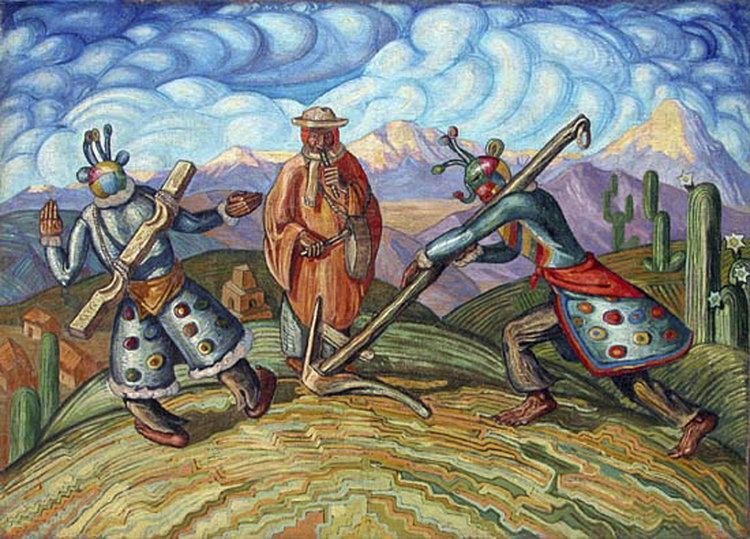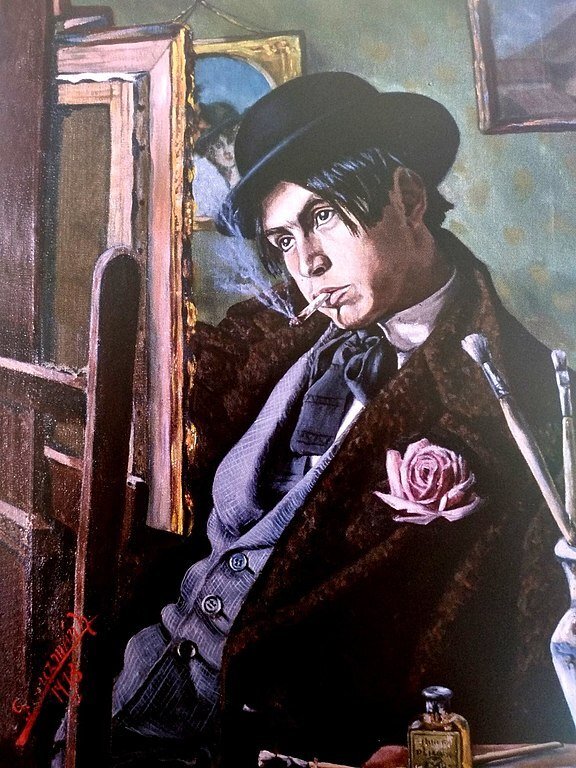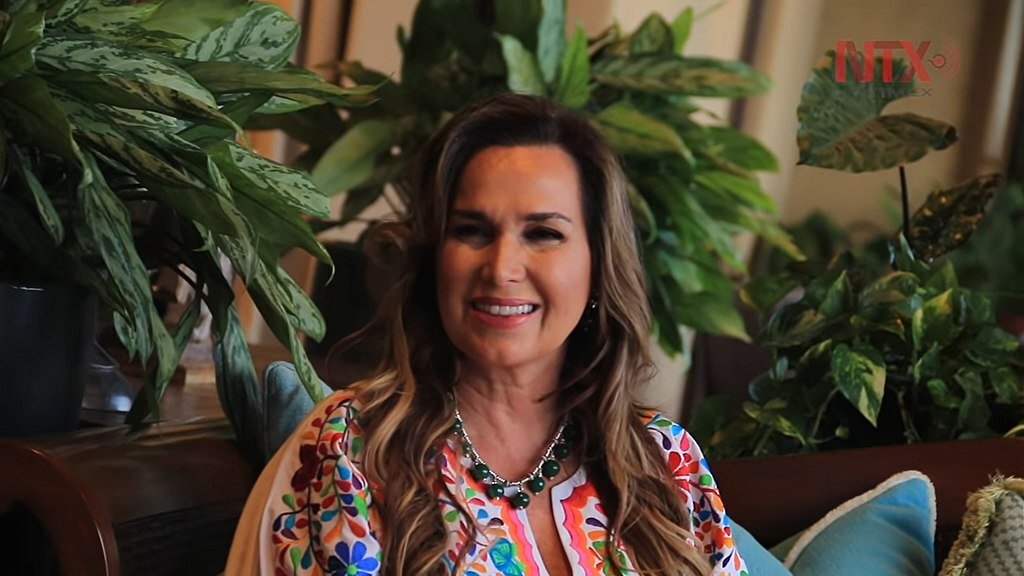Bolivia’s artistic landscape has given rise to a plethora of skilled creators whose craft often echoes the nation’s rich indigenous heritage. Among these talents, Bolivian artists have captivated global attention with their vibrant and joyful paintings, particularly within the context of the indigenous art movement. In this article, we will take a look at five Most Famous Artists From Bolivia.
Roberto Mamani Mamani

Roberto Mamani Mamani is an Aymara artist from Bolivia. His work is significant in its use of Aymara indigenous tradition and symbols. He studied law at university but continued to pursue his true love of art, eventually putting on exhibitions around the globe in places like Japan, the United States, and Germany. His artwork incorporates the symbols and traditions of his forefathers.
Mamani’s paintings draw upon his Aymara heritage and include colorfully stylized images of indigenous mothers, condors, suns, and moons, among other themes. Roberto Mamani uses strong vibrant colors similar to the colors featured in the traditional handmade weavings that the indigenous people of the Bolivian Altiplano widely use. His use of indigenous symbols is especially significant in the South American context where indigenous cultures have been viewed as inferior to European culture.
Alejandro Mario Yllanes

Alejandro Mario Yllanes was a remarkable Aymara artist and printmaker hailing from Bolivia. His journey took a mysterious turn in 1946 after being awarded the Guggenheim Fellowship, which he did not claim, subsequently disappearing from the public eye.
Born in Oruro in 1913, Yllanes initially toiled as a tin miner before unveiling his artistic talents in 1930 through a hometown exhibition at the age of 19. His fervent brush portrayed the mistreatment of indigenous people by the Bolivian government. Yllanes found inspiration in Bolivia’s pre-Columbian heritage and his homeland’s native populace. His figurative art often showcased stylized depictions of Andean attire, merging with landscapes rendered on modest supports such as burlap. He deftly utilized graphite, charcoal, ink, and woodblocks for his works, enveloping them in warm earthy hues.
Alejandro’s political stance led to his exile by the Bolivian government, yet his cultural contributions endured. Serving as a cultural attaché to the Bolivian Embassy in Mexico during the 1940s, he held a solo exhibition at the Palacio de Bellas Artes, with Diego Rivera contributing the introduction. Yllanes eventually settled in New York City, and he is believed to have passed away in Mexico in 1960.
Cecilio Guzmán de Rojas

Cecilio Guzmán de Rojas stood as a renowned Bolivian artist in the 20th century, leaving an indelible mark. His influence was pivotal in Bolivia’s indigenous art movement during the first half of the century. Under his leadership, this artistic movement gained prominence. Guided by the mentorship of Avelino Nogales and Spanish artist Julio Romero de Torres, Cecilio Guzmán delved into his artistic journey.
Born on October 24, 1899, in Potosí, Cecilio Guzmán’s artistic prowess and leadership increased through the years. Unfortunately, his life took a tragic turn, ending in La Paz on February 14, 1950, as he took his own life. Beyond his artistic legacy, Cecilio Guzmán de Rojas was also the father of the esteemed scientist and linguist Iván Guzmán de Rojas.
Sonia Falcone

Born on March 27, 1965, in Bolivia, Sonia Falcone later migrated to the United States during her youth. While initially aspiring to be a dentist during her childhood, her passion for art took precedence. Falcone’s artistic brilliance shines through her vivid and lively creations, which intricately weave Bolivian spirituality using symbols like the serene Andean peaks and gentle llamas.
Emerging as the victor in the 1988 Miss Bolivia International pageant, Falcone not only wears the crown of beauty but also that of artistry. Her artworks have garnered significant global recognition, with some showcased at LORCA Café in Santa Cruz. Beyond her artistic pursuits, she actively contributes to enhancing healthcare and education for marginalized Latino communities in the United States.
Falcone’s art embodies a distinct facet of her personality, most evident in her renowned masterpiece, “Windows of the Soul.” This artwork mirrors her life experiences, revealing her multifaceted nature. Spirituality stands as a cornerstone of her creations, transcending diverse forms, whether cosmic or individual, organic or inorganic, embodying her spiritual ideals.
Benjamín Mendoza y Amor Flores

Benjamín Mendoza y Amor Flores, a Bolivian surrealist painter, gained notoriety not only for his art but also for an unsuccessful assassination attempt on Pope Paul VI in Manila in 1970.
Leaving Bolivia in 1962, Mendoza moved around the world until 1970, residing in Argentina, the United States, Japan, Hong Kong, and the Philippines. His artwork graced galleries in Buenos Aires’ San Telmo district, and in 1963, he illustrated Raúl Barón Biza’s book “Todo estaba sucio.”
The fateful act occurred on November 27, 1970. Disguised as a priest, crucifix in hand, Mendoza approached the Pope as he disembarked from his DC-8 jet at Manila International Airport. Stabbing the Pope twice in the neck with an inscribed dagger reading “bullets, superstitions, flags, kingdoms, garbage, armies, and shit,” Mendoza aimed for the jugular vein.
However, Mendoza was quickly stopped and arrested. During his trial, he claimed he would “save mankind from superstition.” He was convicted of attempted murder and was subsequently imprisoned. Interestingly, while he was in jail, a gallery owner commissioned a series of his paintings, which were later sold in their entirety.
Also Read: Peruvian Painters: 8 Most Famous Artists From Peru
